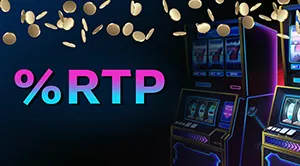 The Behavioural Insights Team (BIT) has recommended that regulators make it mandatory for gambling operators to include odds information in their gambling advertisements.
The Behavioural Insights Team (BIT) has recommended that regulators make it mandatory for gambling operators to include odds information in their gambling advertisements.
This suggestion is based on an experiment which revealed that player trust is marginally increased when consumers are presented with odds, particularly ones that are shown in a format that is clear and straightforward. The team further noted that such ads would aid clients in “making more informed decisions,” seeing as it found that individuals with gambling experience are more likely to both notice the odds and use that information to decide if they are going to gamble.
In terms of clarity, the team proposed that natural units be used to display the odds since a previous experiment showed that consumers found the said format to be the easiest to understand. This particular research was cited in the British Government’s Gambling White Paper.
Since the Behavioural Insights Team discovered that both demand and the perception that one might win are increased upon exposure to marketing material with odds information, researchers also advised caution and that further testing be conducted with regard to how the odds are presented before new regulations are set in stone.
Gamblers Are More Likely to Try a Game When They Know the Odds
 The Behavioural Insights Team studied client responses to two ads promoting a free spins sign-up bonus involving a slot game, with the first one advertising a return to player (RTP) percentage of 93% (lose £7 for every £100 wagered), while the second presented an RTP of 30% (lose £7 for every £10 wagered). The latter was actually an error that ultimately proved useful in providing further insights into how customers are affected by gambling ads.
The Behavioural Insights Team studied client responses to two ads promoting a free spins sign-up bonus involving a slot game, with the first one advertising a return to player (RTP) percentage of 93% (lose £7 for every £100 wagered), while the second presented an RTP of 30% (lose £7 for every £10 wagered). The latter was actually an error that ultimately proved useful in providing further insights into how customers are affected by gambling ads.
According to the results, a little over 50% answered they wanted to try the high odds slot game, in contrast to the 47% who were willing to try the game with the RTP of 30%. Viewers were also more hesitant to try the game when no information on the RTP was provided. Additional data indicated that the majority of individuals who showed a preference toward high odds had gambled on slots in the past twelve months.
A higher percentage of clients (21%) were led to believe that they had a higher likelihood of winning after seeing the promotional material featuring good RTP, in contrast to the 13% who believed they would win by playing the low odds slot, and the 14% who did not know what the odds were. Researchers attributed this data to the absence of ambiguity in the high odds ad or the assumption that if a game’s RTP is not shown, it must be low.
The team also asked participants if they thought the ad was “moderately or very trustworthy.” In total, 34% of users who saw the high RTP ad answered yes, 5% higher than the individuals who were not provided with the exact odds.
Last but not least, the Behavioural Insights Team noted that individuals with gambling experience were more likely to notice the discrepancy between the high RTP ad and the one with the error, which led researchers to the conclusion such players are more perceptive to the odds and would thus benefit from their inclusion in adverts.
- Author


